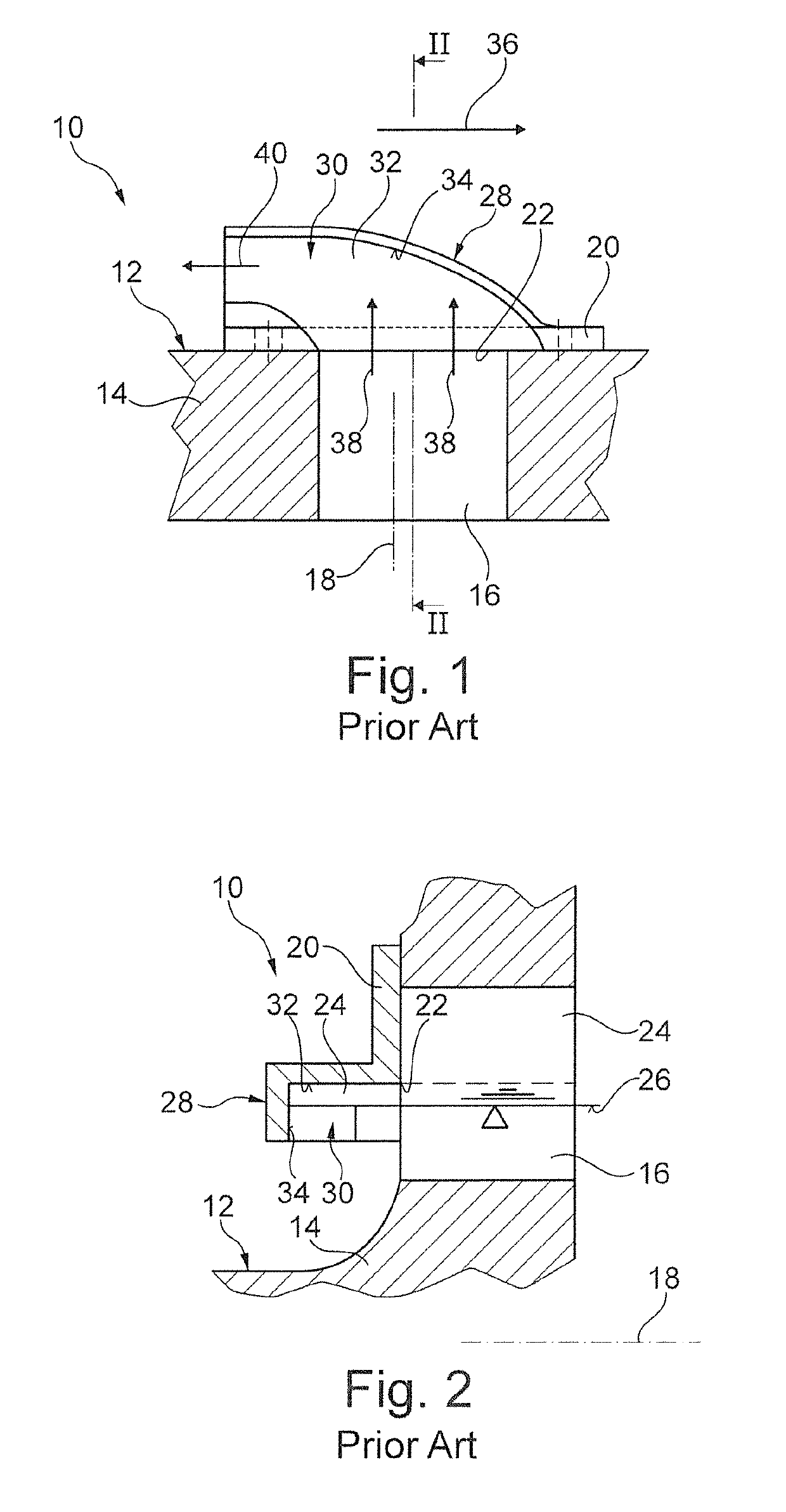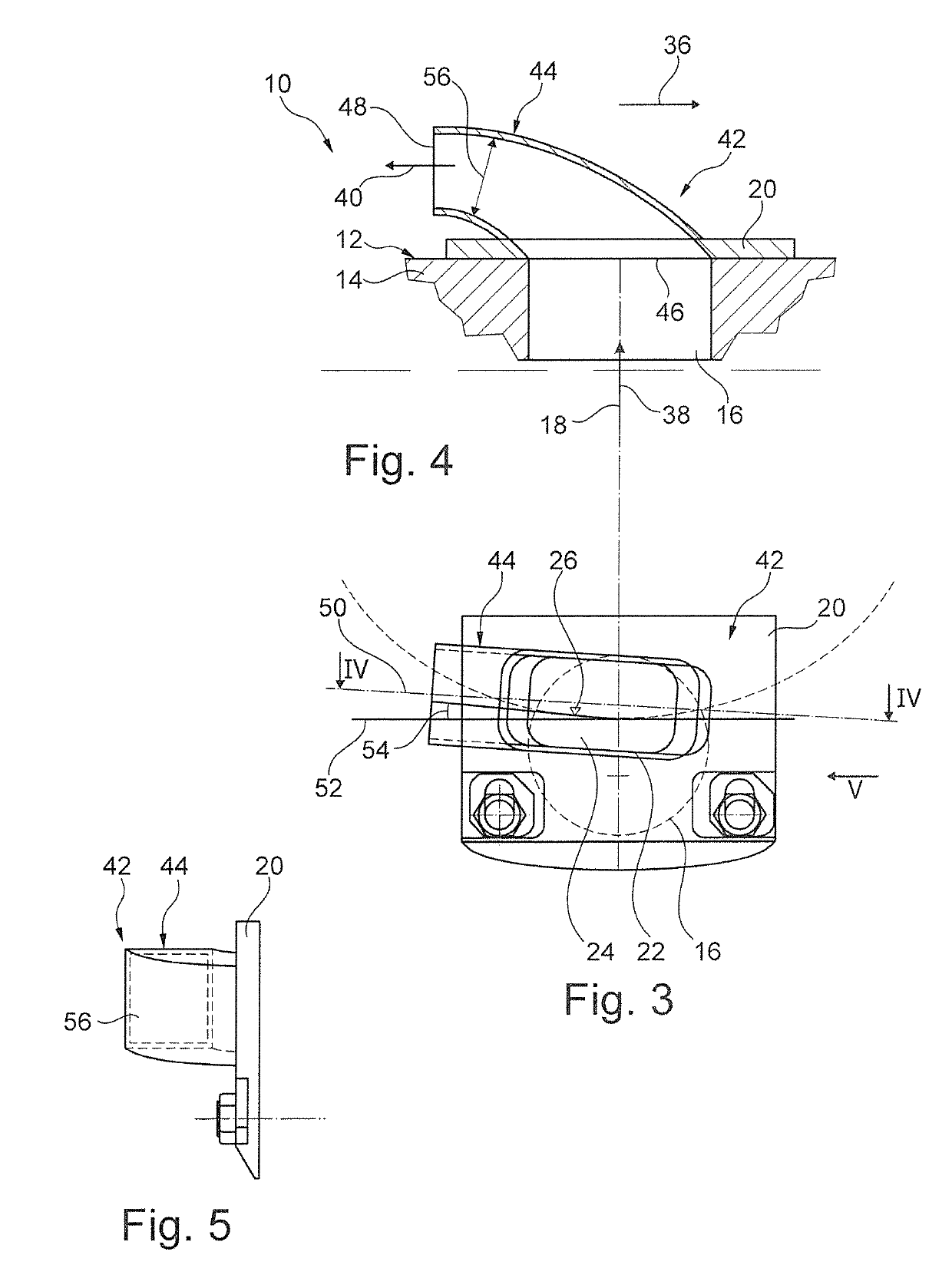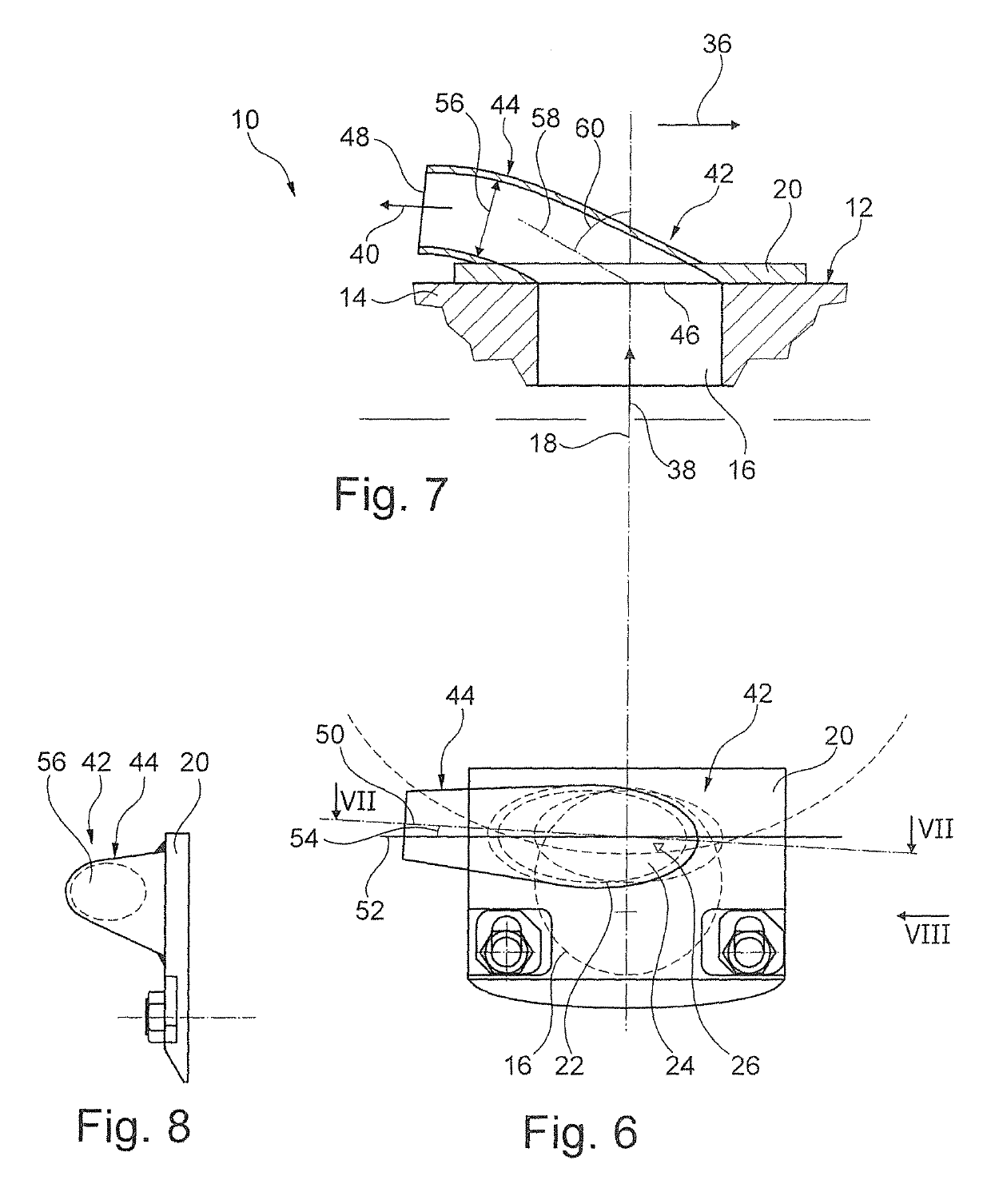Solid-wall scroll centrifuge with front wall with discharge opening having a weir edge and an energy recovery device defining a discharge pipe on the outside of the front wall and in front of the discharge opening having the weir edge
a technology of discharge opening and discharge pipe, which is applied in the direction of centrifuges, rotary centrifuges, etc., can solve the problems of losing a portion of its energy content, and achieve the effects of preventing energy loss, preventing energy loss, and increasing energy
- Summary
- Abstract
- Description
- Claims
- Application Information
AI Technical Summary
Benefits of technology
Problems solved by technology
Method used
Image
Examples
Embodiment Construction
[0036]FIGS. 1 and 2 show the centrifuge drum 12 of a solid-bowl screw centrifuge 10 with its front end, i.e., front wall 14. On the front wall 14 can be seen one of several discharge openings 16 passing axially through the front wall 14 in the direction of a longitudinal axis 18 of the centrifuge drum 12. On the outside in front of the discharge opening 16, a weir gate 20 is in a stationary mount on the front wall 14, where it is adjustable. The weir gate 20 protrudes to just in front of the discharge opening 16, so that it covers the latter on the outside on its radially outer region. The weir gate 20 has a weir edge 22 on its radially inward facing border. According to the prior art, such a weir edge 22 extends along the front wall 14 and thus across the longitudinal axis 18. The weir edge 22 retains clarified product 24 in the centrifuge drum 12, so that during operation of the solid-bowl screw centrifuge 10, this clarified product 24 collects there with a pond depth 26 and then ...
PUM
 Login to View More
Login to View More Abstract
Description
Claims
Application Information
 Login to View More
Login to View More - R&D
- Intellectual Property
- Life Sciences
- Materials
- Tech Scout
- Unparalleled Data Quality
- Higher Quality Content
- 60% Fewer Hallucinations
Browse by: Latest US Patents, China's latest patents, Technical Efficacy Thesaurus, Application Domain, Technology Topic, Popular Technical Reports.
© 2025 PatSnap. All rights reserved.Legal|Privacy policy|Modern Slavery Act Transparency Statement|Sitemap|About US| Contact US: help@patsnap.com



